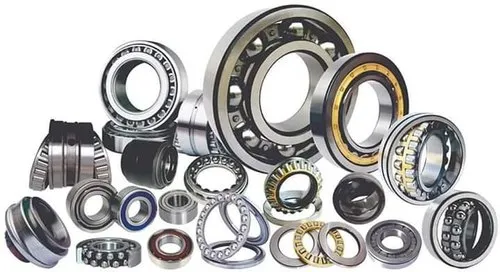Introduction to ball bearings
Ball bearings are essential components found in countless machines and devices.
They help reduce friction, improve efficiency, and enhance performance.
From the wheels on your bicycle to the intricate mechanisms in high-speed machinery, ball bearings play a pivotal role.
But did you know that there are several different types of ball bearings, each designed for specific applications? Understanding these variations can make a significant difference in functionality and durability.
Whether you’re an engineer looking for the right fit or simply curious about how things work, exploring the world of ball bearings opens up a fascinating realm of engineering marvels.
Let’s dive into the different types available and discover what makes each one unique!
The different types of ball bearings
Ball bearings come in several varieties, each designed for specific applications. Understanding these types can help you make informed choices.
Deep groove ball bearings are among the most common. They handle both radial and axial loads effectively, making them versatile for many uses.
Angular contact ball bearings excel in situations where thrust load is present alongside radial load. Their design allows for precise angular positioning.
Thrust ball bearings focus solely on axial loads. These are ideal for vertical shafts or systems that require high-load capacities in one direction.
Self-aligning ball bearings feature a unique design that accommodates misalignment between components, ensuring smooth operation even under stress.
Other specialized options include miniature and ceramic ball bearings, which cater to niche applications needing compactness or resistance to harsh environments. Each type plays a significant role across various industries and machinery setups.
Deep groove ball bearings
Deep groove ball bearings are among the most versatile and widely used types of bearings. Their simple design allows them to handle both radial and axial loads, making them suitable for a variety of applications.
These bearings feature a deep raceway that provides increased contact area between the balls and races. This results in smoother rotation with minimal friction. The robust construction also enhances durability, allowing them to operate effectively under high-speed conditions.
You’ll find deep groove ball bearings in everything from electric motors to automotive components. Their reliability is key for machinery requiring precise movement and stability.
Whether you’re working on industrial equipment or home appliances, these bearings can often meet your needs without breaking the bank. They strike a balance between performance and cost-effectiveness that many engineers appreciate.
Angular contact ball bearings
Angular contact bearings are designed to handle both radial and axial loads simultaneously. Their unique geometry allows them to accommodate higher speed applications, making them a popular choice in various industries.
These bearings feature an angle between the line of action of the load and the bearing axis. This design provides excellent support for thrust loads while maintaining stability at high speeds. You’ll often find these bearings used in equipment like pumps, motors, and machine tools.
The ability to adjust preload enhances their performance further. By controlling the internal clearance, users can optimize stiffness and reduce vibration during operation.
This type of bearing comes in single-row and double-row configurations, offering versatility depending on your application’s requirements. Whether for precision machinery or heavy-duty tasks, angular contact ball bearings provide reliable solutions that stand up to demanding environments.
Thrust ball bearings
Thrust ball bearings are designed to accommodate axial loads, making them essential in applications where forces push along the shaft. Unlike other types of bearings, they consist of a set of balls positioned between two grooved washers.
These bearings excel in high-speed environments and can handle moderate radial loads as well. Their main strength lies in their ability to maintain precise alignment under pressure.
Commonly found in automotive gearboxes and machine tool spindles, thrust ball bearings play a critical role. They ensure smooth operation and longevity for equipment subjected to heavy axial stress.
Choosing the right thrust bearing involves understanding load capacity and rotational speed requirements specific to your application. Proper installation is also crucial for optimal performance and durability over time.
Self-aligning ball bearings
Self-aligning ball bearings are designed to accommodate misalignment between the shaft and housing. This feature allows them to operate smoothly even when subjected to slight angular deviations.
One of the standout characteristics is their two-row design, which enhances load distribution. As a result, these bearings can handle both radial and axial loads effectively.
They excel in applications where shaft deflection or mounting errors occur frequently. Industries such as automotive, agricultural machinery, and conveyor systems often rely on self-aligning ball bearings for optimal performance.
The outer ring typically has a spherical shape that provides the necessary flexibility for alignment adjustments. This unique design minimizes wear and prolongs service life under challenging conditions.
Maintenance is generally straightforward, making them appealing for various operations. Their robust construction ensures they remain reliable over time while reducing downtime from bearing failures.
Other types of ball bearings: miniature, ceramic, and hybrid
Miniature ball bearings are designed for compact applications where space is limited. They excel in precision instruments, robotics, and small motors. Their lightweight design offers low inertia, making them ideal for devices that require quick movements.
Ceramic ball bearings utilize ceramic balls instead of traditional steel ones. This innovation results in lower friction and higher wear resistance. They’re particularly favored in high-speed applications or environments where corrosion could be an issue, such as medical equipment or aerospace components.
Hybrid ball bearings combine elements from both ceramic and steel designs. Typically featuring ceramic balls with steel races, they offer the best of both worlds: reduced weight and enhanced durability while maintaining strength. These versatile bearings find their place in electric motors and high-performance automotive parts.
Each type serves a unique role across various industries, showcasing the adaptability of ball bearing technology to meet specific needs.
Common applications for each type of bearing
Deep groove ball bearings are versatile and widely used in electric motors, automotive applications, and household appliances. Their design allows them to support both radial and axial loads efficiently.
Angular contact bearings excel in high-speed applications. You’ll find them in machine tool spindles, pumps, and other precision equipment where axial load handling is crucial.
Thrust bearings specialize in supporting axial loads. They’re commonly employed in gearboxes, cranes, and any machinery requiring stable thrust capabilities.
Self-aligning bearings are ideal for situations with misalignment issues. These are often found in agricultural machinery or conveyor systems where shaft misalignment may occur frequently.
Miniature ball bearings are essential for electronics like smartphones and cameras due to their compact size. Ceramic bearings provide higher performance levels at extreme conditions—perfect for racing bikes or jet engines.
Hybrid types combine materials for improved durability; they see use across various industrial settings needing lightweight yet strong components.
Factors to consider when choosing the right bearing for your application
When selecting the right ball bearing, several critical factors come into play. First, consider the load capacity. Each bearing type is designed to handle specific loads, whether radial or axial.
Next, think about speed ratings. Bearings have limits on how fast they can operate without overheating or failing. Matching these ratings with your application ensures longevity and efficiency.
Another important aspect is environmental conditions. Will the bearings be exposed to moisture, dust, or extreme temperatures? Certain materials and seals can enhance performance in challenging environments.
Lubrication requirements also matter significantly. Some applications demand regular maintenance while others use sealed bearings that are virtually upkeep-free.
Budget constraints should not be overlooked. High-quality bearings may require a larger investment but often provide better reliability and reduced downtime in the long run.
Conclusion
When selecting the right ball bearing for your needs, it’s essential to consider various factors. Each type of bearing has its unique advantages and applications. For instance, deep groove bearings are versatile and widely used in many industries due to their ability to handle both radial and axial loads. Angular contact ball bearings excel in high-speed applications requiring precise positioning.
Thrust bearings are ideal for situations where axial loads predominately exist, making them suitable for automotive uses like wheel hubs. Self-aligning ball bearings can accommodate misalignment, which is beneficial in operations that may not always be perfectly aligned.
Additionally, specialized options such as miniature, ceramic, and hybrid bearings cater to niche markets or specific requirements where weight reduction or temperature resistance becomes critical.
Assessing loading conditions, speed requirements, environmental factors, and space constraints will guide you toward the best option. Choosing wisely ensures optimal performance and longevity of your machinery or equipment. Understanding these different types of bearings helps make informed decisions tailored to your unique application needs.





